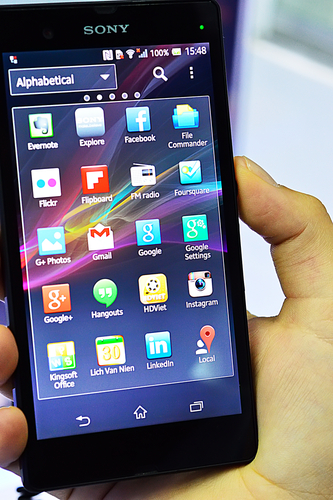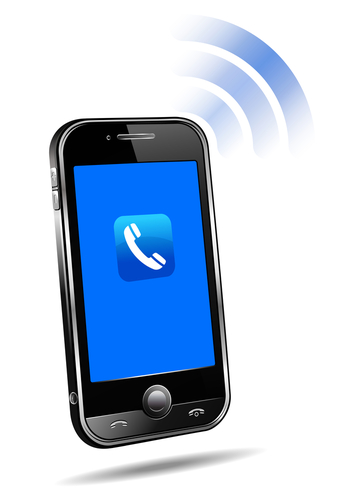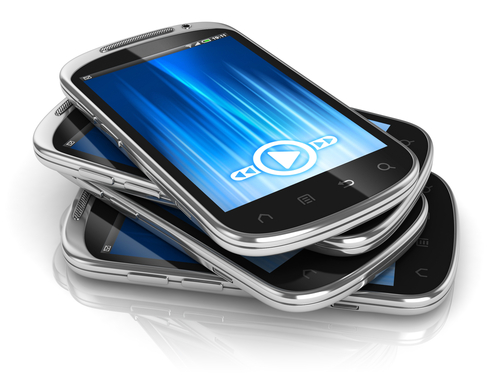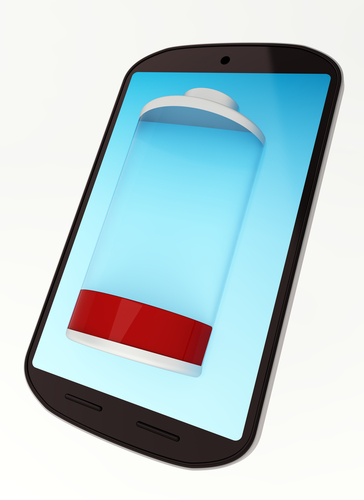December 23rd, 2013

There are millions of Android users worldwide, but there are also plenty of annoyances that come with using an Android phone. Eric Ravenscraft at LifeHacker listed some of the most frustrating Android features and how to fix them.
Your smartphone’s battery dying in the middle of the day isn’t a problem limited to Android users, but it may be the one most complained about. As your phone gets older, the battery life tends to get worse. The obvious solution would be to buy a new smartphone. There are a number of newer options with either larger batteries or more efficient software that extends battery life. Not everyone wants to replace their phone just to get a longer lasting battery, however. And you don’t have to. You could also buy another battery instead. Either a second battery that you keep charged, or a larger capacity battery to replace your existing one. If you’d rather not spend any money, look at removing apps that cause the most drain, or download apps that help you control app’s battery usage. You can also disable bluetooth, GPS and WiFi capabilities when you’re not using them.
The apps and features that manufacturer’s load onto phones before you buy them are rarely useful. They’re referred to as bloatware or crapware by most and usually do nothing but take up space and resources. Unfortunately, you can’t always delete these apps, but you can disable them. Go to the app’s settings and you’ll find a ‘Disable’ button that will keep that app from taking up battery or updating. It will still take up storage space, however.
So many apps are using notifications now that it’s hard to keep up with all of them. If you’re tired of wading through social media, game and email notifications, check for a ‘Notifications’ setting on each app. It may be in the app itself or in the Android app settings. Turning off notifications also reduces battery drain. If you can’t stop the notifications through a settings menu, there’s another way for Android 4.1 and newer users. In your ‘app manager’, uncheck the ‘show notifications’ option and you’re done.
Fixing these annoyances will improve your experience with your Android smartphone. If you have more serious issues, like broken hardware or a malware infection, bring your device to Geek Rescue or call us at 918-369-4335.
December 18th, 2013

The number of smartphone users worldwide is continually growing. The way they use their devices is also expanding with more internet browsing and online activity than ever before. Unfortunately, this means that smartphone users are becoming a more valuable target for hackers and malware. Protecting your mobile device with antivirus or anti-malware apps is important, but as Mathew J. Schwartz reports for Information Week, even the best antivirus apps available to Android users can’t remove malware from your phone.
That may sound like an odd statement but Android antivirus apps can’t delete or even quarantine threats they detect. The reason for this limitation is Google’s Android Application Sandbox. Every Android app runs in this sandbox, which isolates app data and code execution from other apps on the device. With each app isolated, an antivirus app doesn’t have the permissions needed to delete malware it finds.
Security apps are getting better for Android, however. Researchers testing 28 different security tools for Android found that their average success rate improved in the past three months, from 90.5-percent to 96.6-percent. They found that the best apps come from familiar names like Avast, Symantec, Avira and Kaspersky.
When choosing a security app, there’s more to consider than just if it can detect malware. You want an app that doesn’t overly drain your battery and one that loads quickly and runs efficiently. You also have to consider how accurate its detection rate is. You don’t want false positives going off each time you attempt to install a clean app.
Despite the improvements being made to Android security apps, they’re going to continue to be lacking until they’re allowed to actively treat the malware infections they detect. Google has remained silent on when that might be.
In the meantime, users must be in charge of their own security. When using your smartphone, you can’t rely on security precautions to keep you safe. Instead, you’ll need to steer clear of malware by avoiding suspicious links and untrusted malware. Understand that your device isn’t secure and don’t visit potentially dangerous websites.
If you have a malware infection on any of your devices, including your smartphone, bring it to Geek Rescue or call us at 918-369-4335. We remove malware, viruses and fix any issue you’re having.
December 10th, 2013

Malware being made specifically for mobile devices is growing rapidly thanks to the number of smartphone users also growing. Hackers target any device that could be profitable for them, which is also why most mobile malware is a threat to Android users, who make up most of the mobile audience. One recently discovered threat is drawing interest from security experts because it marks a jump in the capability of malware attacks. As Graham Cluley writes on his security blog, MouaBad.P is a piece of Android specific malware that’s capable of making phone calls without user interaction.
MouaBad is a family of mobile malware that allows hackers to control a smartphone remotely. In earlier instances, this malware was used for sending text messages to premium numbers, which charged the users. MouaBad.P is the first time experts have observed the ability to remotely make phone calls without any user interaction.
The malware typically makes it onto a smartphone through an infected app. Once installed, Mouabad.P is able to make phone calls while your screen is off and your phone is locked. It stays hidden by ending all calls once you turn your screen on. It does leave a trail, however. By checking your call logs, you’ll be able to tell if a third party has been making phone calls without your knowledge.
Currently, this type of attack has only been seen in Chinese-speaking regions. Mouabad.P is specifically made to target these countries and won’t work for smartphones outside this region. However, its existence suggests similar threats could be coming to the US soon.
To keep your phone safe from all threats, be extremely cautious about what you download. Also, make sure you’re running an effective, updated security app at all times.
If your smartphone or any other device is infected with malware, bring it to Geek Rescue or call us at 918-369-4335. We’ll clean off the malicious apps and files and help you better secure your device against the next attack.
December 9th, 2013

Worldwide, Android is actually the more popular choice for smartphones than Apple devices. But, security issues are a common complaint of users and a common reason many opt for Apple instead. Bob Violino of InfoWorld reports that these concerns over security are mostly overblown, but points out the two risks that exist for all Android devices.
The Android version of the App Store is Google Play. It’s a marketplace where users can download all kinds of apps. But, it’s regarded as much less protected than Apple’s App Store. The nature of Android is that it’s open for development. This encourages new, innovative apps and features to be developed, but also allows for malicious apps to find their way into the marketplace. Many apps ask for more permissions than they need, even if they aren’t actively malicious. Performance issues and data loss are often attributed to a bad app. Because Google Play does not set up enough precautions to keep malicious apps out, it’s a legitimate concern for Android users.
In the context of the Android platform, fragmentation refers to the many different manufacturer’s and versions of the Android operating system that are currently running on users’ devices. Unlike Apple’s iOS that is consistent for all users, manufacturer’s are able to tweak and alter Android specifically for their devices and aren’t forced to roll out updates once they become available. The result of this is that outdated versions with security flaws are allowed to run, which is a danger to users and to any network they connect to. The majority of Android users are running out of date versions of the operating system. This poses a significant threat to businesses who allows employees to use their own devices on the company network.
The Google Play store and fragmentation are both legitimate concerns for security with Android. For individual users, being more cautious about what apps you download and being proactive about updating your device’s operating system both help to overcome these problems. For businesses, a robust compliance policy, an end to support for older versions of Android and other security provisions allow your company to use Android devices without as many security issues.
For help securing a device or a network, or to fix an existing problem with a device, come by or call Geek Rescue at 918-369-4335.
December 4th, 2013

Most people change smartphones every couple of years, if not sooner. For some, the decision on what new phone to get is an easy one. You might be dedicated to iPhones or have a particular Android model that you want to stick with. Others have a more difficult time deciding between the various options available to them. Eric Ravenscraft of Lifehacker wrote an extensive piece about how to choose a new Android smartphone. Here, we’ll look specifically at what features are most important and how to choose the smartphone with the best features for you.
No one carries their smartphone and a digital camera around everywhere they go. Most users want a phone with a quality camera and it’s one of the most varied features from phone to phone. Just because one smartphone’s camera boasts more megapixels doesn’t necessarily mean it’s the best. Each manufacturer uses different tactics and designs to create a better camera. So, do some research and look for comparison tests online that show the type of images a camera will capture and in what settings they’re best used.
Some users will opt for the biggest, brightest and best high-definition display they can find simply because it has the best specs. That isn’t necessarily wrong, but those super charged displays will cost you battery life and processing power and most users can’t tell much of a difference. The big deciding factor for display is between AMOLED or LCD. AMOLED are usually brighter, with more saturated color. They also use less battery because they only light pixels as they’re needed. LCD provide a more realistic color representation. Different displays are best for different users, but don’t rely on number of pixels to choose your next phone.
The amount of time your battery lasts would probably be first in this list for most people. Once again, you can’t judge battery life on one statistic alone. Some manufacturers include larger capacity batteries to power more powerful processors and brighter screens for longer. Others optimize hardware to use less battery. Both are good ways to improve battery life so research is key to picking the right phone. Battery comparisons and tests are available online.
- Manufacturer Specific Features
If you haven’t narrowed down your choices by using the first three features, this one could help you make a final decision. Manufacturer’s like Samsung, HTC and Motorola all put their own spin on what comes with their smartphones. HTC includes a live news feed of your social media profiles on your home screen and a feature to control your television. Motorola phones come with a voice control app. These features probably won’t win you over by themselves, but they could help you decide between your top two options.
When choosing a new smartphone, you don’t need to worry about which phone is the best. You need only worry about which is the best for you. Before you even start researching phones, take a moment to think about how you plan to use it and what you need it for.
If you have issues with a new smartphone, or would like to fix up your current phone to feel like new, bring it in to Geek Rescue or call us at 918-369-4335.
December 2nd, 2013

Cyber Monday marks the beginning of a busy online shopping season. Unfortunately, that’s well known information, which means criminals will be targeting shoppers hoping to cash in on the holiday season. To keep yourself, and your bank account, safe, Jennifer LeClaire of Lumension suggests doing your online shopping and banking on a mobile device.
Many users assume that a mobile device, like a tablet or smartphone, is less secure than their PC. This is usually only true because they’ve failed to take the same security precautions on their mobile device that they have on their laptop or desktop. With security apps in place, mobile devices can be much more secure because there are far fewer threats specifically targeting them.
There are certainly pieces of malware made specifically for Android, and to a lesser extent Apple’s iOS, but it pales in comparison to the threats being produced for PCs. Both Apple and Android provide security in their app store. As long as users don’t venture outside of the store to download unverified apps, they should have an entirely safe environment. PC users typically download more and take more risks online, which leaves their PC teeming with vulnerabilities and possible infections.
If your mobile device has an antivirus app installed, and is absent of any existing malware, you’ll have a great foundation for a secure online shopping season. You’ll still want to use smart surfing tactics, however. For example, don’t use public WiFi for any activity where you’re asked to log-in to an account, or provide payment information. Public WiFi provides no security for your data, which allows criminals to easily intercept any information you send over that network. So, while a mobile device may be more secure for online shopping than your PC, it shouldn’t be used just anywhere. Shop from home on your own, secured network.
Regardless of how you plan to do your online shopping this year, you need to take the proper precautions. To secure any of your devices, remove viruses and malware, or to create a more secure network at home or the office, call Geek Rescue at 918-369-4335.
November 22nd, 2013

Malware for both PCs and smartphones continues to be a growing problem worldwide. Adam Greenberg, of SC Magazine, reports that much of the new malware discovered in the past quarter uses techniques to falsely verify, or by-pass altogether, digital signatures used to validate legitimate applications and files.
Researchers with security company McAfee reported a 30-percent increase in malware for Android,m which equates to about 700-thousand new pieces of malware. Most of this mobile malware is known as “Exploit/MasterKey.A”, which allows for the avoidance of digital signature validation.
This method is also being used in the increasing threat of malware for PCs. Malware for PC users using falsified digital signatures is up 50-percent this quarter with more than 1.5-million new pieces identified.
These latest tactics are more intelligent ways of making users believe a file of application they’ve downloaded is safe for use. Antivirus software company, BitDefender, reported one malware scam that convinces users that they’re downloading an antivirus program called ‘Antivirus Security Pro’. It contains a stolen digital signature and when run, it identifies false examples of malware and demands money to fix the problem.
Examples like this are why it’s important for users to keep security software up to date. Antivirus applications struggle to keep up with the latest tricks of cyber criminals, and it’s impossible for them to catch the latest pieces of malware that attempt to infect your system if they’re out of date.
If your computer or smartphone falls victim to malware, or you’d like to improve your security before the next attack happens, call Geek Rescue at 918-369-4335.
November 18th, 2013

At this point, your phone is probably your most prized possession. You probably even feel strange if it isn’t with you. You can use your smartphone for almost anything, which means that the battery doesn’t last as long as you’d like. Jennifer Jolly, of USA Today, has some tips for how to get the most battery life out of your smartphone. These tips don’t even require you to sacrifice performance.
- Get Rid Of The Unwanted Features
Many of us don’t use our phone with bluetooth. You might not be in range of WiFi or in need of GPS services. There are features on your phone that you either never use, or only use in certain situations. If you need to get more life out of your smartphone’s battery, turn these services off until you want to use them.
Your smartphone’s display drains more battery than anything else. Turning down your brightness settings can have a significant impact on your battery. In most settings, even the lowest brightness setting is easy to see and you’ll get a much longer battery life out of it.
Many users leave their smartphones on vibrate all of the time. That saves you from being the annoying person whose ringtone goes off in a meeting, but it drains your battery. Yes, it takes more battery to vibrate than it does to ring. If you’re desperate for more battery life, you’ll have to live with your ringtone.
Free apps are riddled with advertisements. It takes battery power to download and display those advertisements. So, pay the money for the full version that’s ad free and you’ll get a slight uptick in battery life. This is only helpful for apps you use often. Otherwise, you probably won’t see enough extra battery life to warrant the payment.
Keeping apps updated is also helpful for lowering battery life because many updates make apps more efficient. But, allowing your phone to auto-update is wasteful to the battery. This is because your phone is constantly checking to see if an update is available. Instead, just try to remember to check for updates on your own when it’s convenient.
With these tips, you can keep your phone from dying in the middle of the day.
If you have problems more severe than a dying battery, call Geek Rescue at 918-369-4335. We fix all brands of smartphones.
November 6th, 2013

If you have an Android smartphone, you’ve probably noticed that there are a number of apps that came pre-loaded on it that you don’t need and don’t use. These apps come from the phone’s manufacturer, but as Liam Tung of ZDNet writes, they may be creating vulnerabilities in your smartphone’s security.
Researchers at North Carolina State University examined pre-installed apps on smartphones made by Google, Samsung, HTC, LG and Sony. Of the 10 devices studied, 86-percent of pre-loaded apps requested more permissions than they actually used. This gives the apps access to data they don’t need, but that data becomes accessible when the app is compromised.
In terms of sheer number of vulnerable, pre-installed apps, the HTC Wildfire S and the Samsung Galaxy S2 had the most of the pre-2012 devices. For post 2012, the Samsung Galaxy S3 contained a stunning 40 vulnerabilities. In contrast, Google’s Nexus 4 only had three vulnerabilities.
Google itself has a good track record for releasing security patches to fix vulnerabilities found on their hardware. However, for individual manufacturers like Samsung, Sony and HTC, these patches take time to roll out to customers. For the devices studied, an average of 6-months is how long it took for an officially released security patch to finally make it to all affected customers. That amount of time leaves a large window for hackers to exploit those vulnerabilities.
Some of these native apps are able to be removed by users, but many others cannot be. This means users stay at risk until an appropriate security patch is released to fix the problem. So, next time you’re in the market for a new Android smartphone, be sure to consider how many pre-installed apps it comes with.
At Geek Rescue, we remove malware, fix broken hardware and improve security on all kinds of devices, including smartphones. Whatever your issue, call us at 918-369-4335 or stop by one of our locations.
October 31st, 2013

There have been relatively few true threats to the security of iPhones compared to the amount of malware being produced for Android. A serious threat has recently emerged, however. Antone Gonsalves, of Network World, reports that a team of security experts uncovered a vulnerability in a large number of iOS apps. The flaw allows for a third party to intercept data and then send their own directly onto a user’s device.
The team is calling it “HTTP Request Hacking” because it allows hackers to intercept HTTP traffic between the app and server. The hacker can then tell the app to retrieve data from a different server, which usually involves putting malicious links on your iPhone and iPad. This method is particularly effective for news apps because the hackers can put fake links in the news stories, which cause malware to be downloaded when clicked.
Once a hacker gains control of the app, they can continue to send whatever data they want until the app is updated to close the security gap, or removed completely.
There is such a large number of affected apps that the security team couldn’t contact all of them directly. Instead, they opted to spread the word through the media. The vulnerability only affects apps using an HTTP connection. Most high quality apps use the more secure HTTPS connection.
There’s code available to fix the problem, but it’s much easier to just remove the app. If it’s using an HTTP connection, you probably shouldn’t be using it anyway.
This particular security flaw was specifically found for iOS and while it hasn’t been tested on Android, security experts note that it’s likely that would affect those users as well.
If you believe you have malware infecting any of your devices, come by or contact Geek Rescue at 918-369-4335. We will fix your phone, tablet or computer and help make sure you’re prepared for the next malware attack.




















